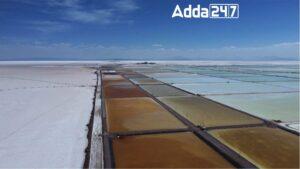SpaceX’s Cargo Dragon embarked on its 29th mission to the International Space Station (ISS), launching from the iconic Pad 39 at the Kennedy Space Center in Florida at 8:28 p.m. EDT (Eastern Daylight Time) on November 9th.
Synchronizing Earth’s Rotation for Orbital Rendezvous in SpaceX’s 29th Mission
The timing was meticulously synchronized with Earth’s rotation, aligning the seaside firing stand directly with the orbital plane of the space station—a prerequisite for rendezvous missions with objects hurtling through space at speeds exceeding 17,000 mph.
Smooth Ascent and Autonomous Flight
The ascent to space unfolded seamlessly, and approximately 12 minutes after liftoff, the Dragon spacecraft was released to navigate autonomously. Pending successful progression, the spacecraft was scheduled to rendezvous with the space station docking at the lab’s forward port.
SpaceX’s Impressive Records
This mission marked the 29th Cargo Dragon flight to the space station and the second voyage for capsule C-211. Notably, the first stage booster, undertaking its second flight, autonomously returned to the Cape Canaveral Space Force Station, marking SpaceX’s 39th Florida touchdown and its 243rd overall.
Delivering Research Gear and Equipment
The primary mission objective is to transport vital research gear and equipment to the ISS. Among the cargo is an experimental high-speed laser communications package designed to revolutionize data transmission using infrared laser beams, surpassing the capabilities of traditional radio systems.

Optical Communication Revolution
Meghan Everett, a senior scientist with the space station program, highlights the potential impact of optical communication on space research. The technology aims to expedite data transmission from the space station to Earth, providing faster results for scientific experiments and aiding the medical community with swift data transfer.
Atmospheric Waves Experiment (AWE)
A notable payload is the Atmospheric Waves Experiment (AWE), an externally mounted instrument capturing 68,000 infrared images daily. AWE aims to study gravity waves at the boundary between Earth’s atmosphere and space, offering insights into their effects on communication, navigation, and tracking systems as they interact with the ionosphere.
Rodent Experiment on ISS
Inside the space station, a groundbreaking experiment involves 40 rodents, aiming to understand the combined effects of spaceflight, nutrition, and environmental stressors on female reproductive and bone health. This research is crucial for enhancing our understanding of the impact of space travel on reproductive health, both for female astronauts and women on Earth.



 Mankind Pharma Acquires Bharat Serums an...
Mankind Pharma Acquires Bharat Serums an...
 Discovery of Lithium Resources in Mandya...
Discovery of Lithium Resources in Mandya...
 What is Blue Screen of Death?
What is Blue Screen of Death?
